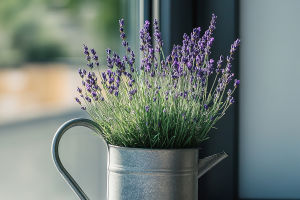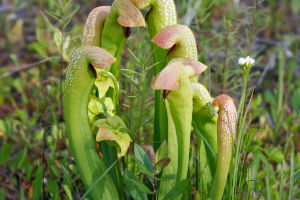Imagine walking down a street, enjoying a sunny afternoon, when suddenly, you see a tree with colorful flowers gently swaying in the breeze. At first glance, it might seem like the flowers are moving in a rhythmic dance.
This is no illusion—what you're witnessing is the Chorisia speciosa, better known as the "dancing flower."
This charming plant, often found in urban streetscapes, is not just admired for its beauty but also for its unique behavior that captures the imagination. In this article, we'll take a closer look at what makes the Chorisia speciosa so special and why it's often called the "dancing flower."
What is Chorisia Speciosa?
Chorisia speciosa is a tropical tree native to South America, particularly in Brazil, Argentina, and Bolivia. It's commonly planted as a decorative street tree in warmer climates, known for its large, vibrant flowers. The tree itself grows tall and has a spiny trunk that adds an interesting texture to the landscape.
The flowers of the Chorisia speciosa are large and striking, with five broad petals in hues of pink, purple, and white. When in full bloom, the flowers are eye-catching, often becoming the focal point of attention in parks, streets, and gardens. However, the true magic of this plant lies in how these flowers move.
The "Dance" of the Petals
What truly sets the Chorisia speciosa apart from other flowering trees is its petals' ability to appear as if they are "dancing." When the wind picks up, the long, graceful petals gently sway and twist, almost as if they are alive. This movement gives the flowers the illusion of a ballet performance, with the petals acting like the flowing skirts of a dancer.
This "dancing" effect can be especially captivating when seen from a distance, as the flowers seem to come to life in the breeze. It's not just a random movement; the petals are designed to flutter and catch the wind in a way that adds to the tree's visual appeal. This phenomenon is a beautiful reminder of how plants can interact with their environment in subtle, but meaningful ways.
The Colors and Design
The flowers of Chorisia speciosa are often compared to dancers for their vibrant, flowing design. The petals are large, broad, and colorful, with shades ranging from soft pinks to rich purples and whites. The design is meant to attract pollinators, primarily bees, who are drawn to the bright colors.
These flowers are also known for their distinctive texture. The petals feel soft and almost velvety to the touch, and their large surface area helps them catch the wind more easily. As they move in the breeze, the petals' colors change with the shifting light, adding an extra layer of beauty to their already eye-catching appearance.
The Role of the Dance: Pollination
While the visual appeal of the Chorisia speciosa is enough to capture anyone's attention, there's more to its “dance” than meets the eye. The gentle movement of the petals is actually a clever pollination strategy. The wind not only makes the flowers appear to dance but also helps spread their fragrance, which attracts pollinators like bees and butterflies.
The movement of the petals helps increase the flower's exposure to the air, allowing it to release its scent more effectively. The pollinators, drawn to the sweet aroma, visit the flowers, transferring pollen as they go. This process ensures that the flowers have the best chance of reproduction, thanks to the wind's role in enhancing both the visual and olfactory appeal of the plant.
Why Do We Love the Dancing Flower?
The Chorisia speciosa has a charm that goes beyond its visual appeal. There is something magical about watching its flowers move in the wind, as if they were performing a delicate dance. This unique characteristic has made the tree a popular addition to public spaces and gardens, where its beauty can be admired by passersby.
There's also an emotional connection people tend to form with the plant. The way the flowers appear to move with the breeze evokes a sense of liveliness and playfulness, reminding us of nature's ability to surprise and enchant. In a world often filled with the static and the predictable, the dancing flowers bring a little bit of joy and spontaneity to our everyday lives.
Caring for the Dancing Flower
If you're thinking about planting a Chorisia speciosa or adding one to your garden, it's important to consider its specific needs. The tree thrives in warm, sunny climates and prefers well-drained soil. It's relatively low-maintenance once established, though it may require regular watering during dry spells. As the tree matures, it can grow quite tall, so it's best suited for larger gardens or open spaces.
One of the most notable features of this tree is its resistance to pests and diseases, making it an excellent choice for urban environments where plants are exposed to a variety of elements. However, it's important to ensure that it has plenty of space to grow, as its branches can spread quite wide.
Conclusion: A Flower That Moves With the Wind
The Chorisia speciosa—or "dancing flower"—is a delightful reminder of how nature constantly surprises us. With its vibrant colors, unique petal movement, and clever pollination strategy, this tree is a true marvel of the plant kingdom. Whether you're lucky enough to see it bloom in person or you simply enjoy hearing about it, there's no denying the charm of the "dancing" petals.
Have you ever seen the dancing flower in bloom? Perhaps you've caught a glimpse of its graceful movement in the wind? Feel free to share your experiences and thoughts with us—let's continue the conversation and explore the wonders of nature together!


